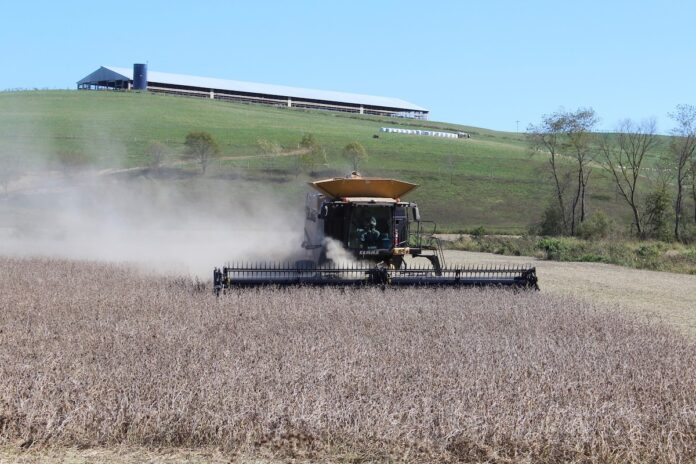SALEM, Ohio — CAUV values are going up in nearly half of Ohio’s counties this year, in some cases more than 300%.
Property values in 41 counties were reappraised or updated, on a schedule mandated by the state, which means Current Agricultural Use Values were also updated. The Ohio Department of Taxation released its new CAUV values to counties this summer.
Ohio Farm Bureau said some county auditors are reporting increases between 80-100%, but David Thomas, Ashtabula County auditor, said in a letter to the editor in The Vindicator that some CAUV values in Ashtabula County jumped more than 300%.
“While value increase does not equal tax increase dollar for dollar, this mandate will kill some small farm operations,” Thomas said, in the letter.
There’s not much that can be done locally, but Ohio Farm Bureau is encouraging its members to support two pieces of state legislation that the group says aims to soften the blow.
Basics of CAUV
The state’s CAUV program is a way for people who own farmland to get some relief in their tax bill.
Under the CAUV, farmland is taxed at a rate that reflects its value for agricultural purposes, instead of its “highest and best” potential use, according to the Ohio Department of Taxation. This typically results in a substantially lower tax bill for landowners.
CAUV value is based, first and foremost, on the soil type of the land. There are more than 3,500 soil types in Ohio. Each soil type has its own value, calculated through a complex formula that takes into account agricultural data like crop yields and crop prices as well as non-agricultural factors like capitalization rate. More productive soils have higher CAUV values.
The idea is that CAUV values will follow the farm economy. With crop prices hitting record highs in the past few years and staying relatively high, comparatively, to five or 10 years ago, the current CAUV value has increased accordingly.
What can be done
Property taxes in Ohio are paid a year behind, so the changes won’t be reflected until new tax bills come out in January. Counties have no authority to change CAUV levels, but landowners can file an appeal with the Ohio Board of Tax Appeals.
Some counties have put out online calculators to help landowners see what the new values will do to their tax bill. Others are waiting until after the November election, as there are tax levies on the ballot that could impact the tax rate, to talk specific numbers.
In some cases, levies may be adjusted down to offset the increase in property valuations.
Ohio Farm Bureau is encouraging members to reach out to local lawmakers to urge them to support House Bill 187 and Senate Bill 153. HB 187 is sponsored by Republican Reps. Tom Hall, of Madison Township, and Adam C. Bird, of New Richmond. SB 153 is sponsored by Republicans George Lang, of West Chester, and Terry Johnson, of McDermott.
The sister bills would temporarily adjust the CAUV to an average of the past three years.
“Landowners will still have an increase, but it will soften a very sharp curve,” said Whittney Bowers, director of state policy and grassroots engagement for Ohio Farm Bureau.
The adjusted value would apply to tax years 2023, 2024 and 2025, impacting not just counties being reappraised this year, but those due for reappraisal or update in the next two years.
The House version of the bill would also take away the state’s authority to order county auditors to change property values. It was voted out of the House Ways and Means Committee and sent to the full Ohio House on Sept. 20. The Ohio Soybean Association supports the Senate version of the legislation, which is still in the Senate’s Ways and Means Committee.
•••
Counties reappraised in 2023
Auglaize, Clinton, Darke, Defiance, Delaware, Franklin, Gallia, Geauga, Hamilton, Hardin, Harrison, Henry, Jackson, Licking, Mahoning, Mercer, Morrow, Perry, Pickaway, Pike, Preble, Putnam, Richland, Seneca, Shelby, Trumbull, Van Wert and Wood
Counties updated in 2023
Ashland, Ashtabula, Athens, Butler, Clermont, Fulton, Greene, Knox, Madison, Montgomery, Noble, Summit and Wayne










